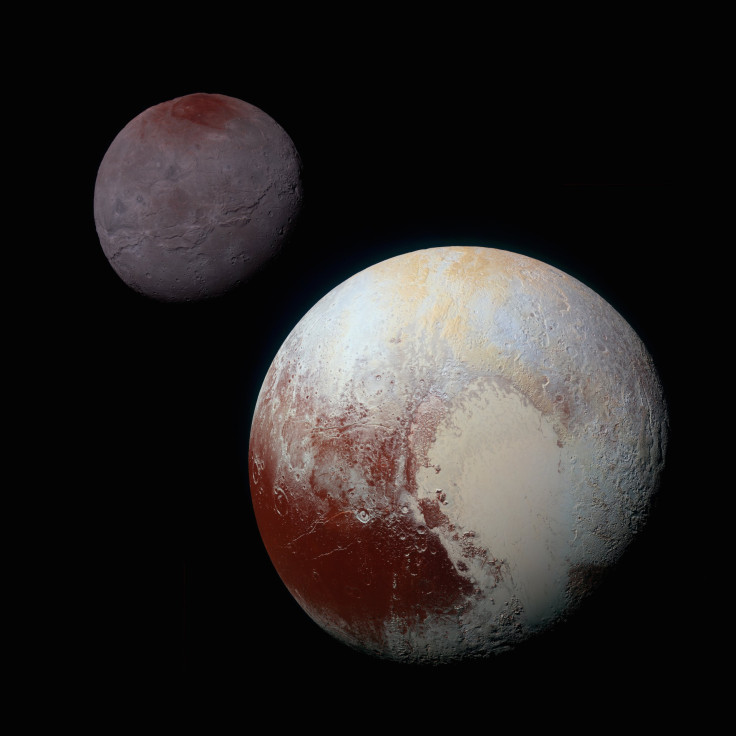New Horizons Reveals Charon's Gigantic Canyon And A Battered, Complex Surface

After a series of high-resolution photos of Pluto published by NASA over the past few weeks, it’s now Charon’s turn to steal the limelight. On Thursday, the space agency released its best color and the highest resolution images yet of Pluto’s largest moon, showing a complex landscape covered in mountains, canyons and craters.
“We thought the probability of seeing such interesting features on this satellite of a world at the far edge of our solar system was low,” Ross Beyer, an affiliate of the New Horizons Geology, Geophysics and Imaging (GGI) team from the SETI Institute and NASA Ames Research Center in Mountain View, California, said in a statement accompanying the photos. “But I couldn't be more delighted with what we see.”
At half the diameter of Pluto, Charon is the largest satellite relative to its planet -- in this case, a dwarf planet -- in the solar system. In the photos, taken by the New Horizons spacecraft during its flyby on July 14, there is one feature that stands out -- a canyon system that stretches more than 1,000 miles across the entire face of Charon.

“It looks like the entire crust of Charon has been split open,” John Spencer, deputy lead for GGI at the Southwest Research Institute in Boulder, Colorado, said in the statement “With respect to its size relative to Charon, this feature is much like the vast Valles Marineris canyon system on Mars.”
Additionally, the photos also show that the plains south of the canyon -- informally referred to as Vulcan Planum -- have fewer large craters than the regions to the north, indicating that they are noticeably younger, and pointing toward a wide-scale “resurfacing.”
“The team is discussing the possibility that an internal water ocean could have frozen long ago, and the resulting volume change could have led to Charon cracking open, allowing water-based lavas to reach the surface at that time,” Paul Schenk, a New Horizons team member from the Lunar and Planetary Institute in Houston, said in the statement.
© Copyright IBTimes 2024. All rights reserved.






















